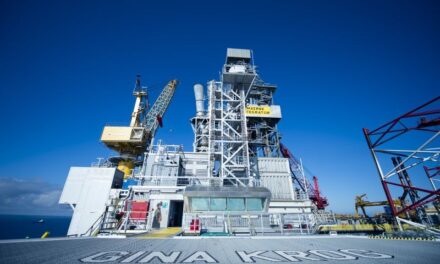By Kas Mohammed, VP Digital Energy at Schneider Electric UK&I
According to the Institution of Engineering and Technology’s (IET) latest Engineering Kids’ Futures report, the UK faces an estimated shortfall of over 173,000 workers in STEM sectors. Retiring personnel are not being replaced, and almost half (49%) of engineering businesses say they’re struggling to recruit workers with the right skills. On average, this skills gap adds up to 10 unfilled roles per business in the UK—costing our economy as much as £1.5bn each year.
Today’s lack of essential skills in tech, energy management, and electrical engineering is hindering a large number of both new build and retrofit projects in the UK. But instead of waiting for the issue to resolve, some service providers are successfully forging ahead with their developments. How? Via software and automation.
New technologies are now able to monitor the health and performance of real estate, hospitals, education campuses, hotels, and more. So, let’s explore how building operators are harnessing the data and insights that these new technologies produce to help navigate today’s skills gap.
Tracking energy usage and managing operations
Building managers face a daunting task. They’re responsible for keeping all operations running smoothly while minimising the usage and cost of resources and ensuring occupants remain comfortable, too. Everyday challenges include new business obstacles, evolving priorities, lower budgets, stricter sustainability metrics and, of course, fewer qualified facility staff. Added to this is the fact that 80% of the buildings standing in 2050 will have already been built today meaning many of them will not have been constructed with the same emphasis on energy efficiency that is so important right now. So, they need tools that increase remote service capabilities and maintain operations, even when resources are low.
Building software installed throughout a site can make a huge difference to the optimisation of energy and operations. Today’s software packages feature a suite of analytics and monitoring services that offer important insights into a building’s energy use. They monitor and record the power consumed by each appliance, and automatically consider ways in which it can be optimised. For instance, only heat rooms while they are occupied, and only charge battery-powered assets when energy is at its cheapest or greenest, depending on priorities.
The software also offers operators a birds-eye view of the premises’ performance. On a single dashboard, managers can view energy consumption and make remote adjustments that optimise costs, emissions, and occupant comfort levels. This combination of manual changes and AI-powered adjustments achieves typical results including a 29% decrease in unscheduled maintenance, 33% fewer occupant complaints, and as much as a 20% energy cost reduction. The industry skills gap continues to be an issue, but it needn’t prevent businesses and buildings from making huge operational improvements.
Identifying and resolving faults before they disrupt
Usually, issues with IT, electrical, and building equipment are discovered too late, resulting in a major breakdown. Not only does this disrupt a business’s operations, but comprehensive repair and maintenance can take lengthy periods of time, and prove even more costly and elusive with engineers in such high demand. This is particularly pertinent when considering the large number of existing buildings in the UK with older systems that may be more prone to breakage and were not built with the same kind of modern-day controls that are becoming increasingly commonplace in new builds today. Ultimately, a reactive approach to asset performance exposes businesses to uncertainty every day.
Fortunately, modern building software enables managers to anticipate and address problems, long before they become critical incidents and crucially, can be retrofitted to older buildings. First, the software connects to the building’s critical assets. Then, it evaluates live data and applies advanced analytics to uncover any potential issues. Armed with this information, business leaders can take the necessary steps to suppress any threats at the earliest possible opportunity or, if possible, even allow the software to make the required adjustments automatically. With asset advisor software, organisations can minimise safety risks, avoid unplanned downtime, reduce operational losses, and evade costly, limited maintenance.
The value of optimised, healthy buildings
The benefits of building software don’t simply end with operational improvements, however. It even helps to cultivate ‘healthy’ buildings, in which occupant health is safely supported through the management of air quality, carbon dioxide, temperature and humidity, occupancy levels, and more. Healthy buildings bring stronger occupant confidence and loyalty, and reduced insurance costs. Studies show that healthy, well-ventilated environments even result in 3.5 fewer sick days per employee, a 101% increase in cognitive scores, and a potential 20% rental premium. Simply, data is transforming building management in almost every area.
Software is not yet at the stage where it can completely replace highly skilled workers across tech, energy management, or electrical engineering. Perhaps it never will be. But we must use any tools we can to safely navigate today’s skills shortage and ensure business continuity to the fullest extent. With building software, organisations can minimise downtime and ensure that their engineers aren’t stuck in a reactive maintenance loop. Instead, they’re free to take on more impactful, fulfilling, and important work—and offer even greater support through the skills shortfall.



